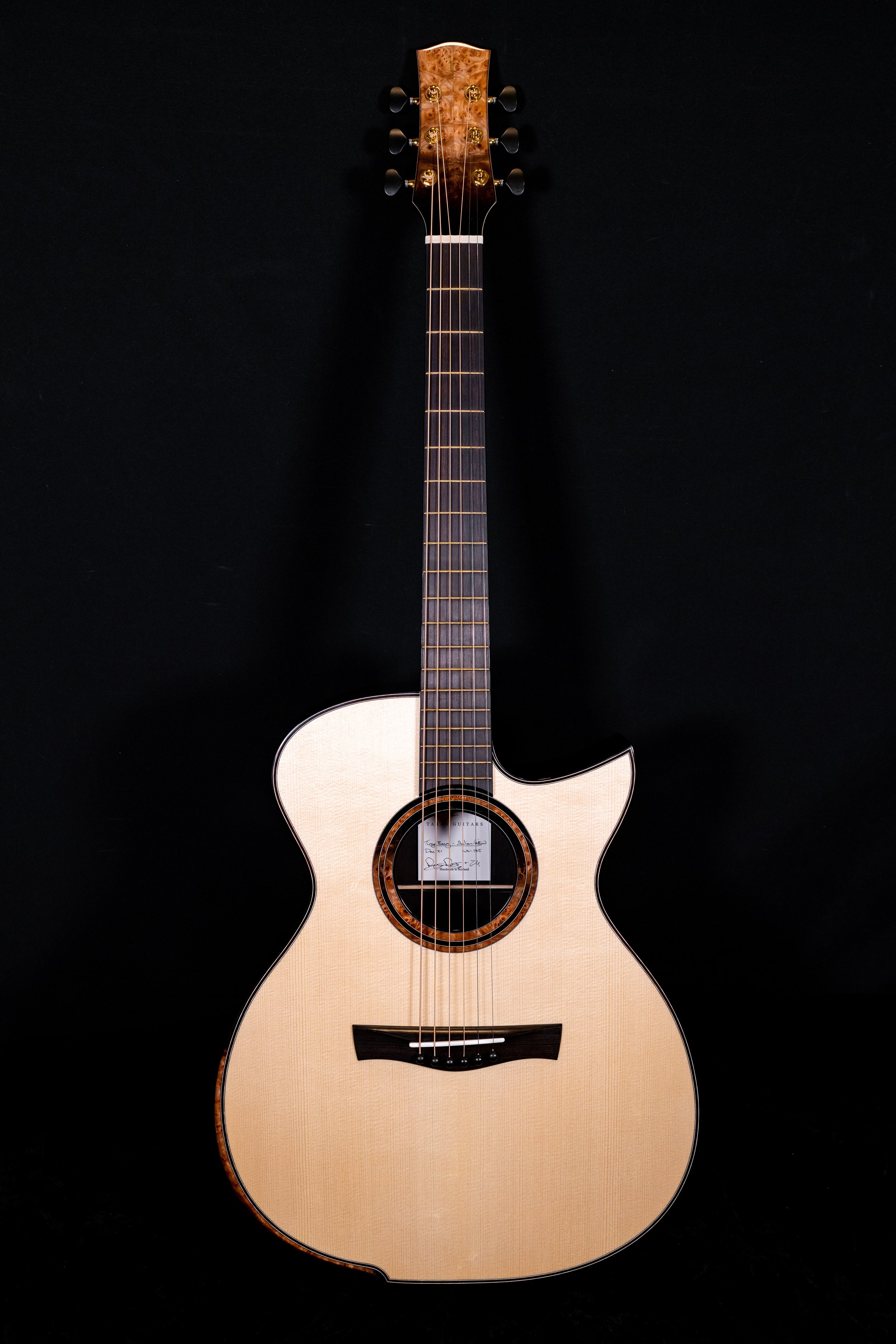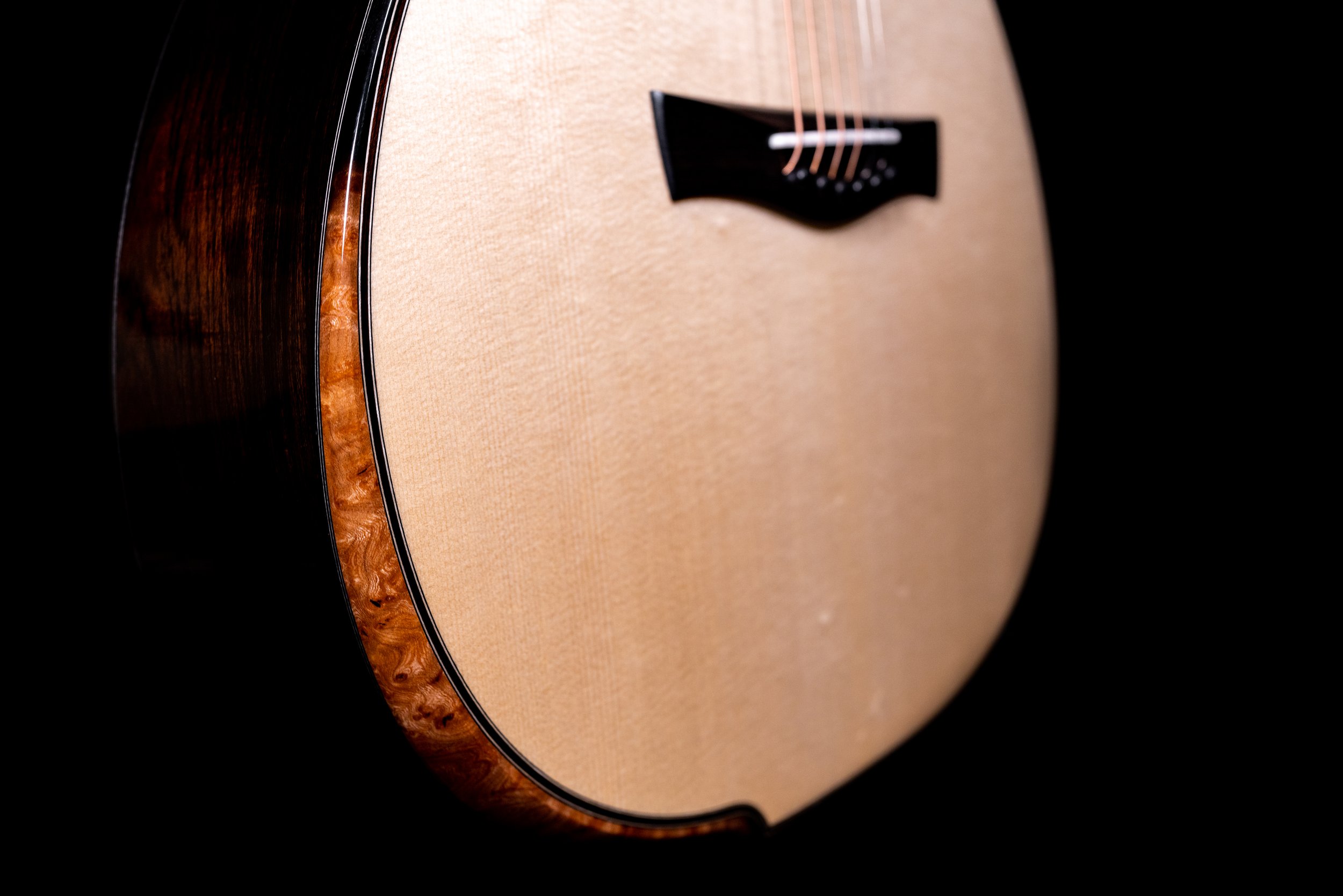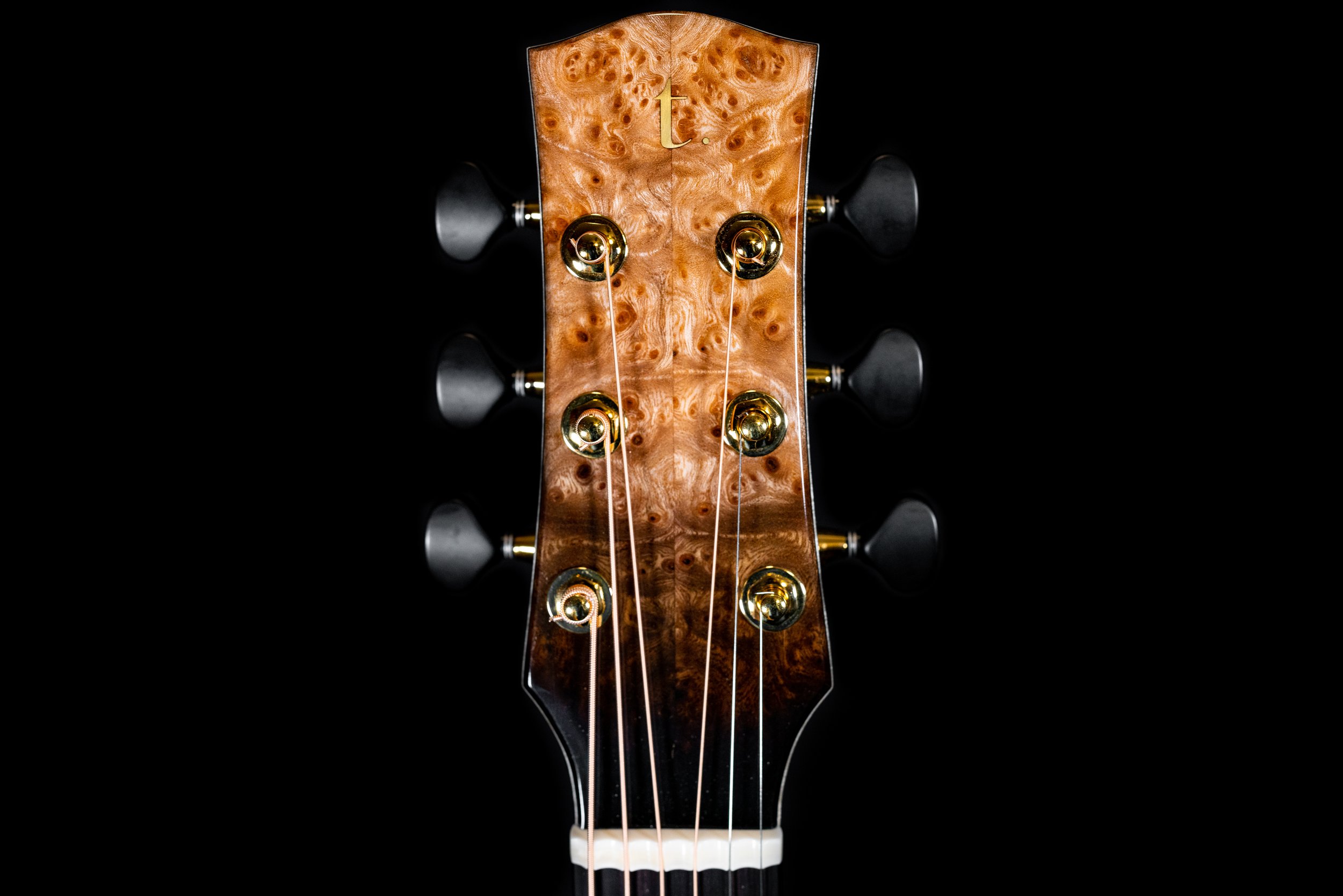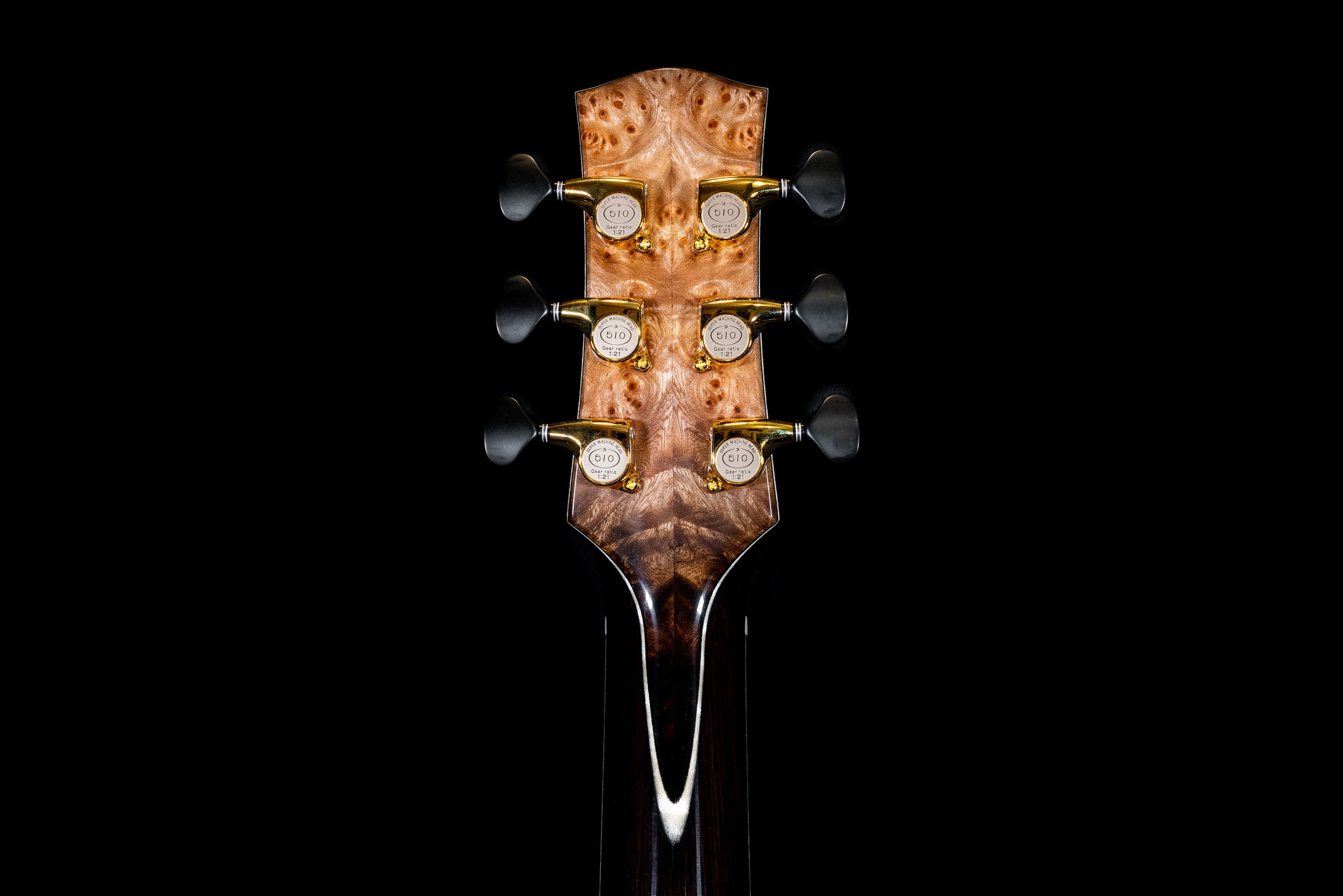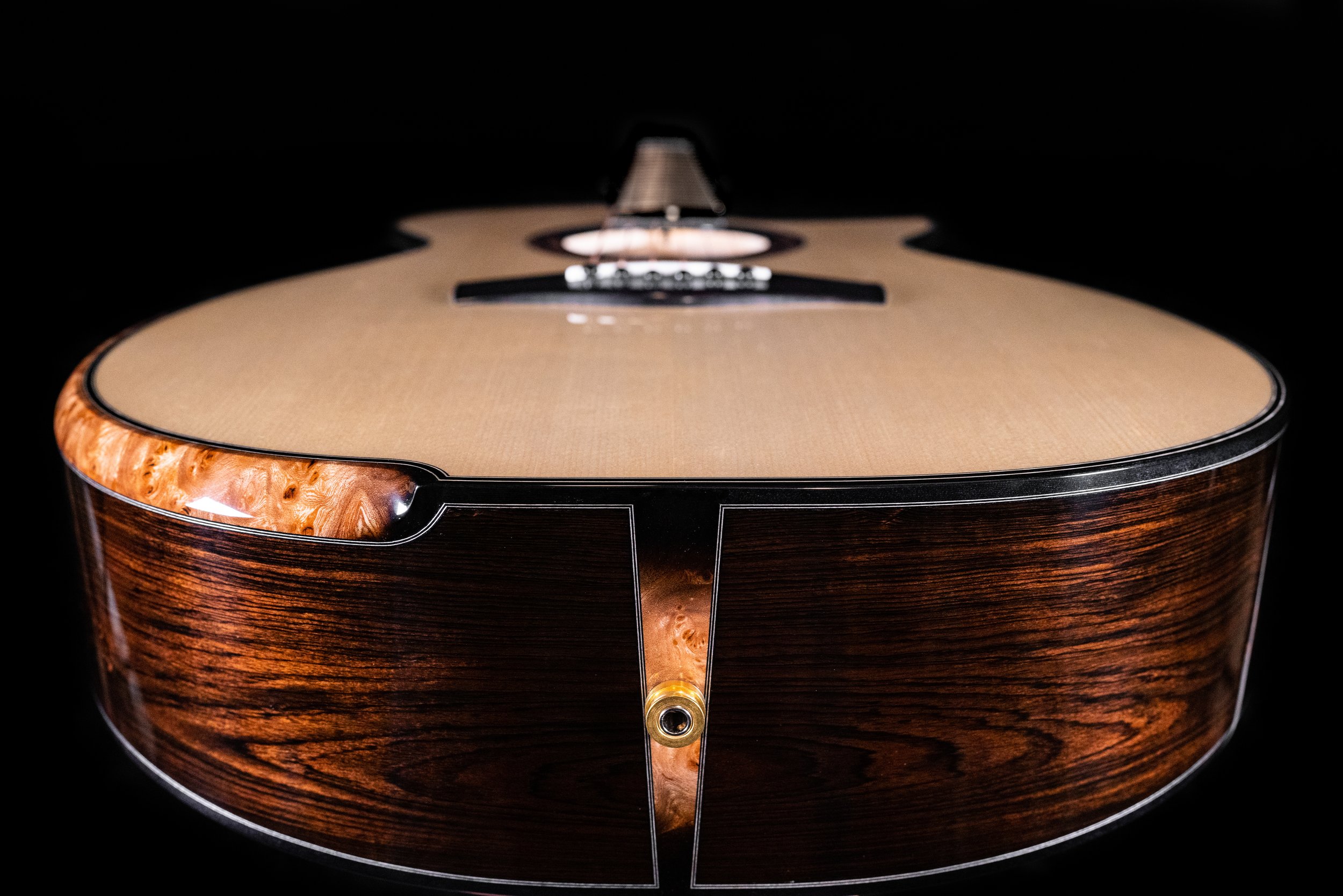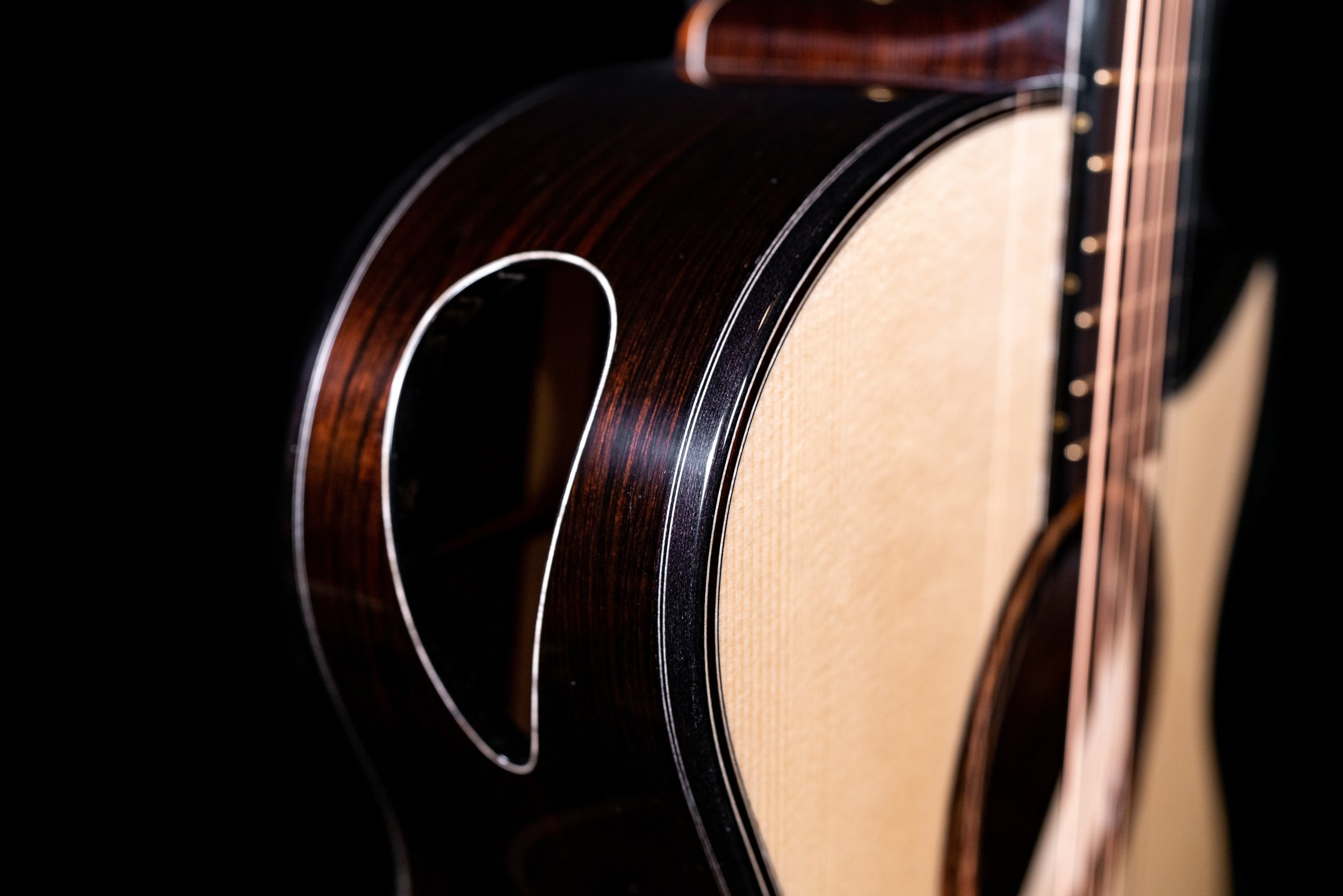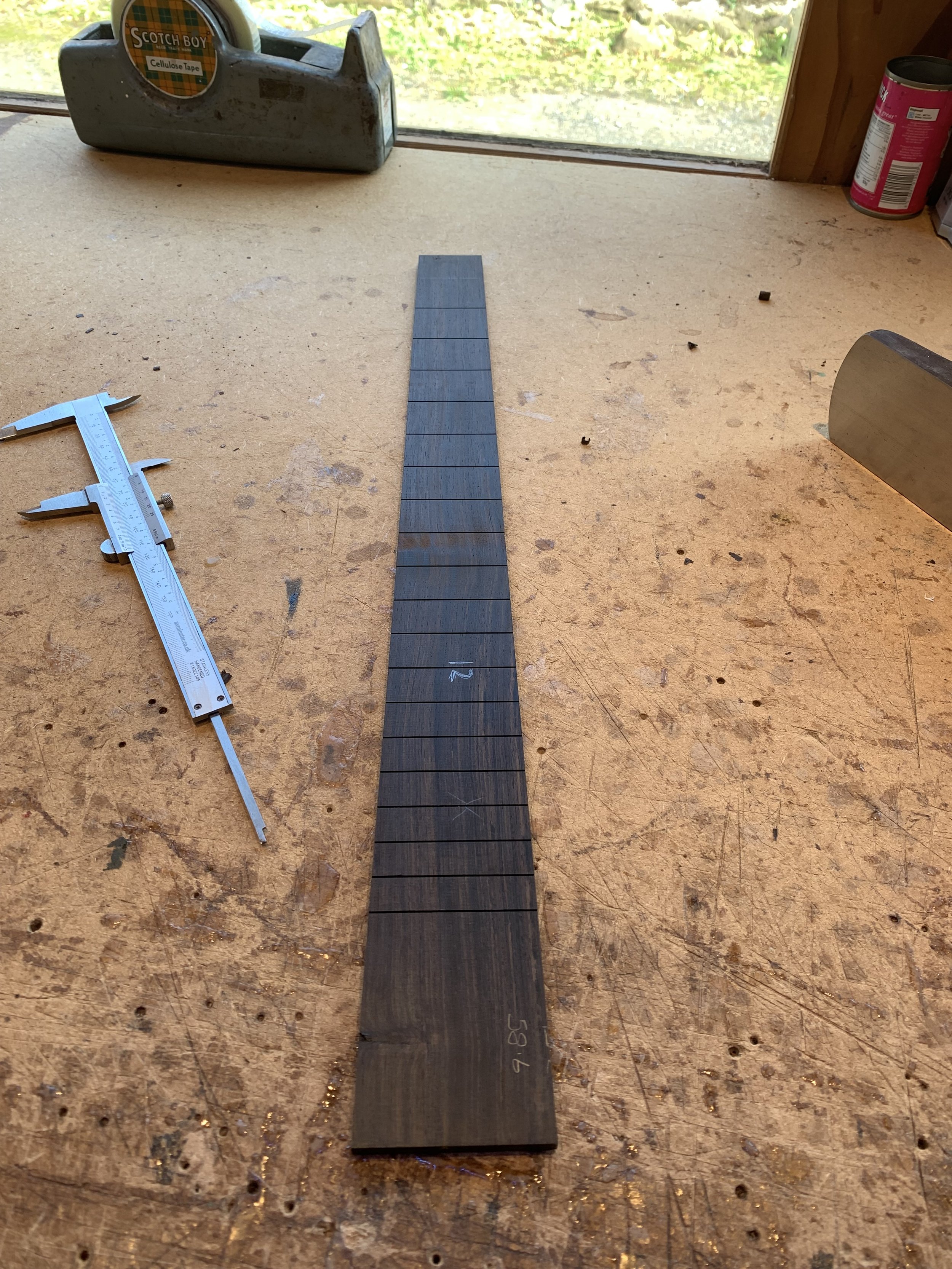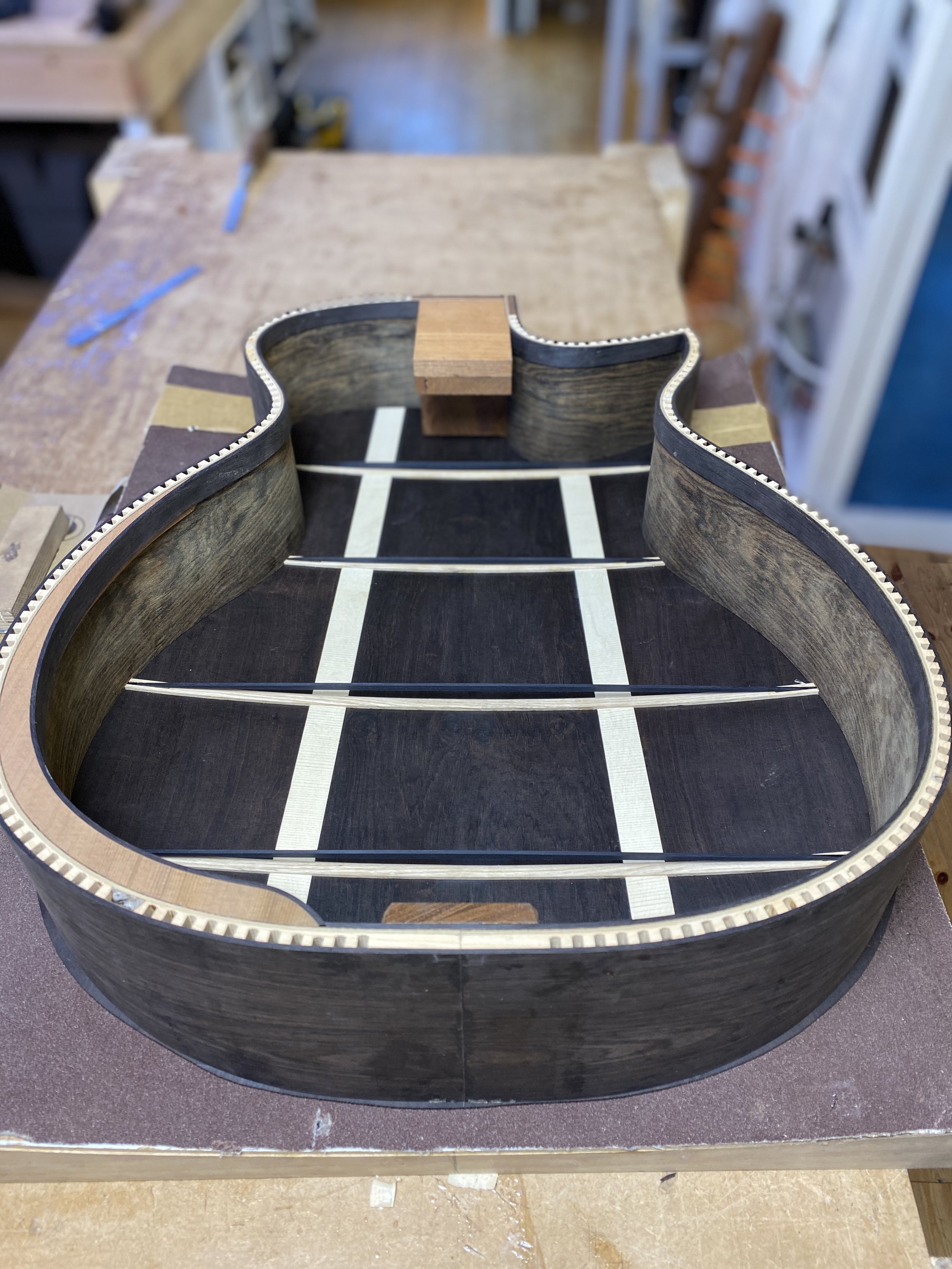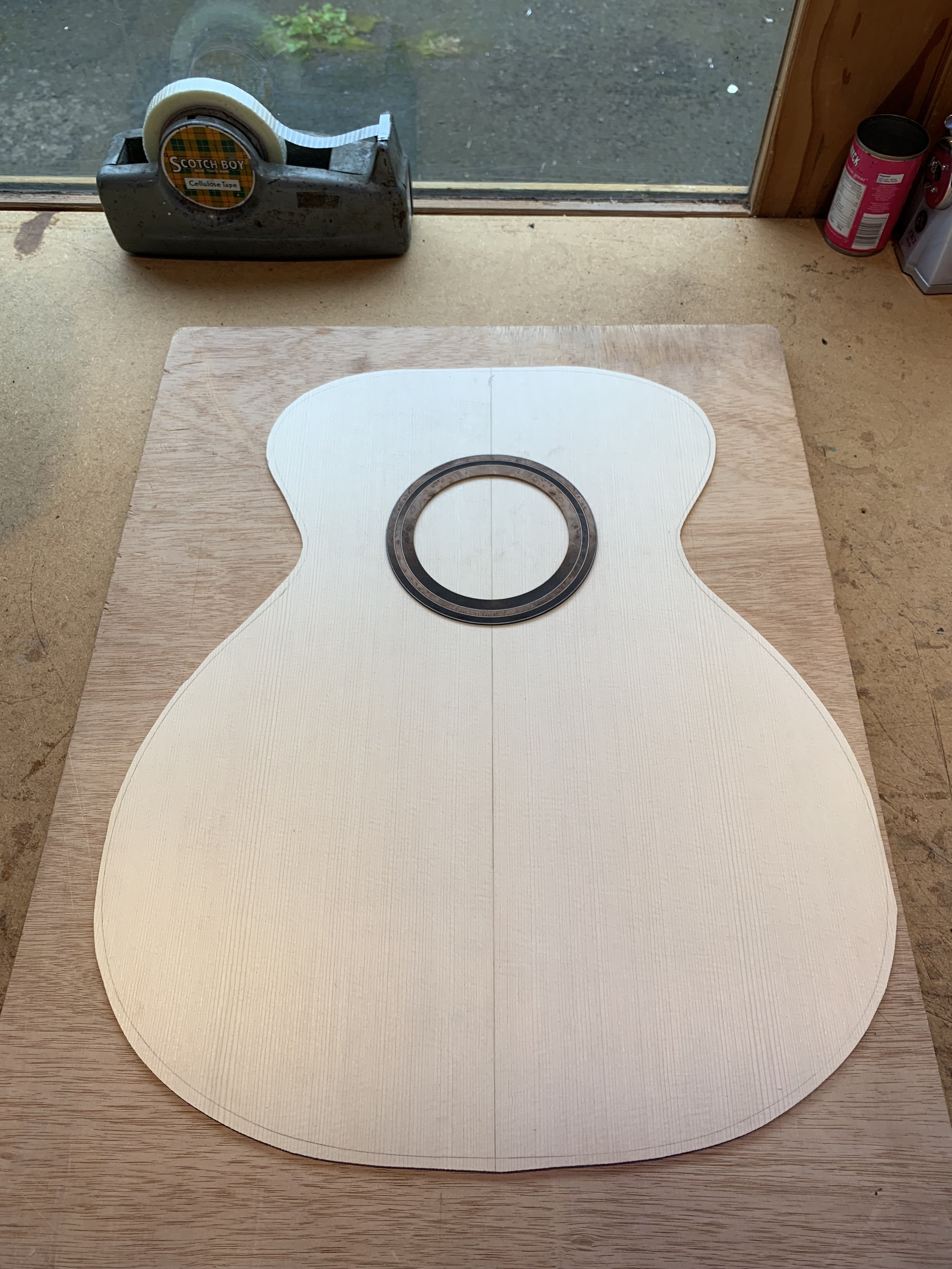Tirga Beag D. Furlow
Last year we had the absolute pleasure of working with Dustin Furlow, our 2021 Young Player Bursary winner, on his very own Tirga Beag. While we kept the main shape the same, we redesigned the cutaway and body depth to suit his playing style but, more importantly, we completely redesigned the bracing and topography of the soundboard.
Dustin was not only looking for a guitar that had strong projection for his beautiful solo performances but one that could create an encompassing experience for him too. We discussed at the length Dustin’s playing style and the balance of the instrument. Dustin was looking for not an overly powerful bass, and mids that that sparkle with separation everywhere from top to bottom, up and down the neck - for clarity - but not so much that it lost the relationship between each note. A tough brief…
However, I am pleased to say that we’re all absolutely delighted with the results! So much so that we are now using this new design as our main Tirga Beag model going forward and we will be calling it the Tirga Beag D. Furlow.
We are currently working on the first of its offspring for our dealer Wood Sound in Seoul. This Tirga Beag D. Furlow is in Royal Fenland Oak and will have a curly redwood top.
Needless to say, we’re all quite excited!
Sizes
Scale - 635mm
Frets to body - 14
Body length - 495mm
Max body width -402mm
Depth - 122mm
Width at nut - 45.2mm
Spacing at saddle - 58.6mm
String weight - 12-53
Materials
Back and Sides - 100% FSC 3- piece African Blackwood
Fully kerfed side constructions in Western Red Cedar with
Taran Guitars Compression Braces on back
Soundboard - Italian Spruce
Rosette - Hot-Sand-Faded Scottish Burr Elm with rippled Sycamore detailing bound in African Blackwood
Bindings - Ebano
Front Purfling - 100% FSC African Blackwood with rippled Sycamore veneer
Front Linings - 100% FSC African Blackwood
Bevel - Hot-Sand-Faded Scottish Elm
Cutaway - Mitred grain matching
Neck - Wenge, Equal taper medium C
Headstock - Hot-Sand-Faded Scottish Burr Elm with rippled Sycamore veneers under sheaths, t. inlayed in gold
Fretboard - 100% FSC African Blackwood
Gold dots at the major frets up to 21st fret for artificial harmonics guide
Frets - Evo gold wire with semi-hemispherical fret ends
Tuners - Gotoh 510’s 21:1 in gold with black buttons
Bridge - Hand-carvedin 100% FSC African Blackwood with Ebony bridge pins
Nut and bridge piece in bone intonated for standard
Soundport - Bound
Case - Hoffee
“When I first began talks with Rory for this build I had a need for a guitar that would have a wide frequency range for solo guitar pieces and dropped tunings, with a harmonically rich sound but still carrying a strong midrange fundamental that would support songs with vocals and complex harmonic movements. I also wanted to be able to play demanding pieces comfortably and know I'd enjoy sitting with the guitar for upwards of an hour at a time.
The Tirga Beag was a very alluring design to me because its body depth was actually slimmer than the average OM around the edge at around 3 3/4" (94mm) deep due to Rory's cylindrical back - almost acting like a wedge profile - but the lower bout was wide enough at 15 3/4" (402mm) to support deep bass response and powerful headroom. Combining that with a 19 1/2" (495mm) long body (about the average length of an OM) and a shorter 25" (635mm) scale and the result is a guitar that is very easy to wrangle because of where it positions the fretboard relative to the player's centre. In essence, you have more anchorage to work with and because of less tension/smaller frets on the shorter scale you can also play difficult pieces with less strain.
I knew that the wide frequency range I was after was going to depend heavily on the choice of woods. I was really impressed with the warmth that Rory achieved with the Adirondack/African Blackwood combo but because Italian spruce typically provides a "sweet", singing treble I enjoy for my melodies I thought it may be a better choice, and also my experience with the Adirondack spruce was on the Tirga Mhor model and it may behave differently on the 14-fret Tirga Beag. My experience with African Blackwood has been that it routinely provides a smooth, beautiful low-midrange response, while also providing an uber-resonant treble that can inspire the player in the overtones/sustain department. As far as I've experienced, there is no other tonewood that behaves like African Blackwood, despite it being a Dalbergia species like Cocobolo and Brazilian Rosewood. The capability this tonewood combo has displayed in producing really sweet-sounding melodies but also raw power when needed has always inspired me, so to pair it with the shorter scale which can bring a bit of mellowness felt like a no-brainer to round things out.
Getting the midrange to ring clearly on a guitar with tonewoods like these can be challenging because a midrange "dip" can easily occur. The "dip" I am referring to is essentially the way the ears perceive the sound of the guitar as a whole. If you have deep basses and soaring trebles that can potentially end up on the brighter side it is paramount that you voice the bracing in a way that allows the top and bridge to respond just as much to the middle notes on the 5th, 4th and 3rd strings which will support what many call "warmth" to the sound. That warmth is usually what we perceive as the difference between a "tight" sounding guitar and an open one. I'm glad to say that Rory and co. achieved what I hoped for with this guitar. The way it reacts up and down the fingerboard is really inspiring and it just makes my songs sound better than ever, which is what we all want from our guitars.”
- Dustin Furlow , 2022

